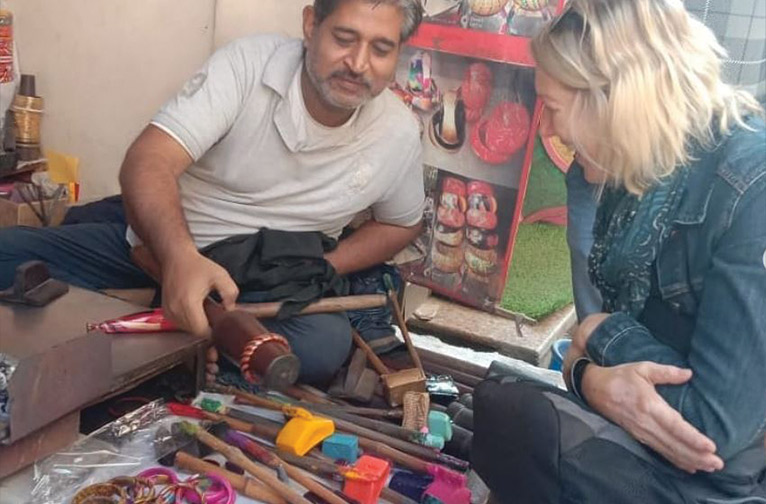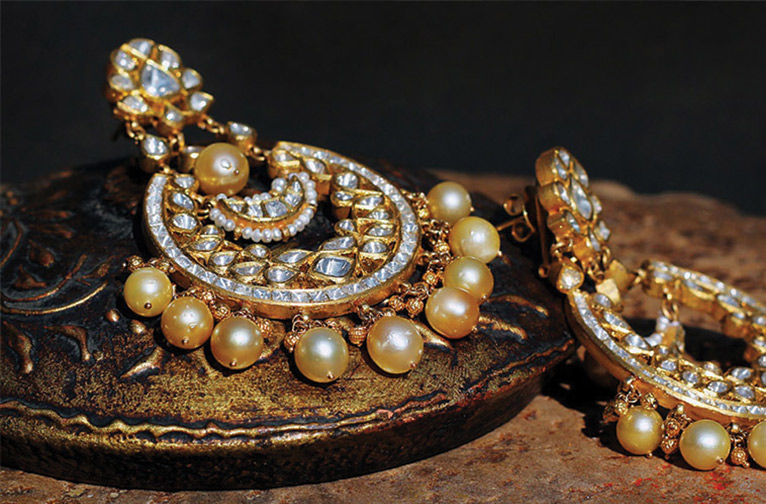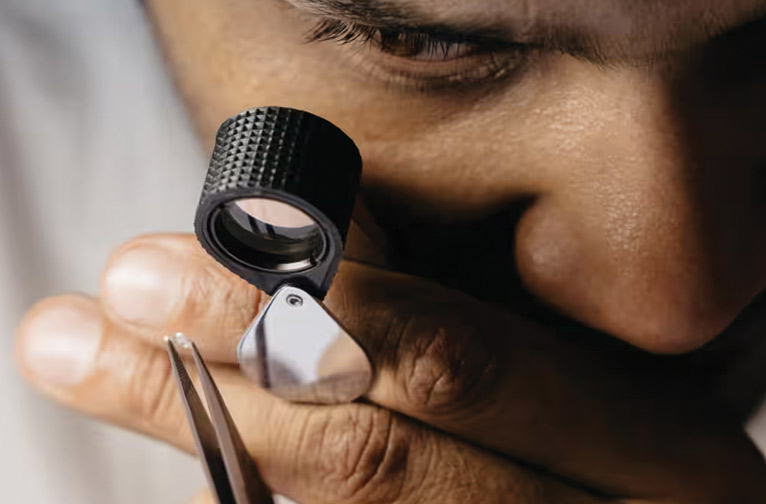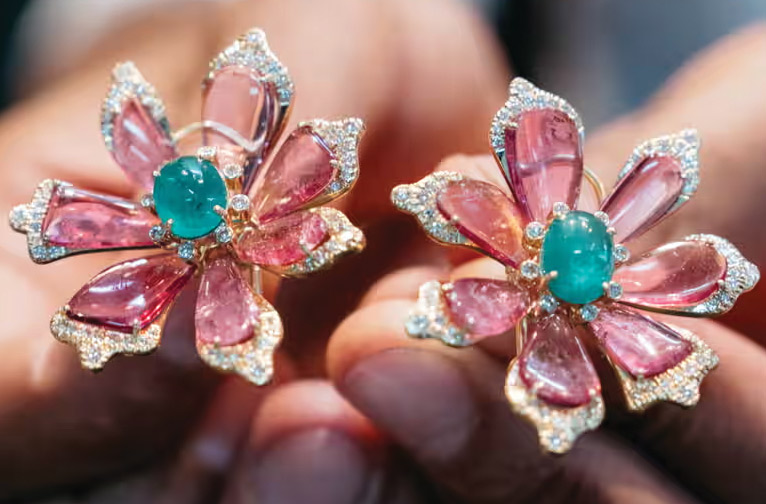When Maharajah Swai Jai Singh II was planning his new capital of Jaipur, one of the most significant aspects of its structure was a special space for artisans to bring their skills to the city. When you travel around the walled city, one of the most vibrant sections one gravitates to is the clutch of streets where craftsmen from the times of the maharajah, back in the 1700s have been plying their trade. It's all very convenient for residents as well as travellers as one can get to see potters and stone carvers, metal workers and textile craftsmen putting their ancestral skills and wares on display. Chief amongst these who enjoyed the patronage of the royals, the nobility and the wealthy were the jewellers stationed in the dedicated space called Johari Bazaar or jewellers’ market.


Jaipur’s jewellery traditions have a long and very precious place in the city’s crafting archives. It has been noted for its exquisite gem cutting and polishing and minakari jewellery the world over for centuries.
Exploring these traditions is an adventure of a rare kind, even if jewellery buying is not at the top of your souvenir buying list.
For the novice too, a peek into a journey from a mine to a bridal trousseau can be incredibly exciting. An excellent spot to set off on the adventure of jewels and gemstones in Jaipur is to head for the fantastic Museum of Gems and Jewellery, located close to the Albert Hall.
There are about 60 odd sections which showcase many aspects of the sourcing of gemstones— to the craft of jewellery design. Pictures of Johari Bazaar in the old days are a sharp reminder of Jaipur’s over 300-year jewellery traditions. You’ll see gemstones that are still rough and those that have been cut and polished to an exquisite sheen; there are even samples of rare and new stones. The “Navgrahas “or nine planets section features the “Navratan” wall with nine idols with nine stones representing the nine planets.
You will discover displays of Jaipur’s beloved kundan-minakari traditions, French enamel work, Victoria-era pieces and the unique gold on glass filigree thewa jewellery from Pratapgarh, from Rajasthan. You’ll also find a beautiful range of gold and diamond jewellery set with precious stones, as well as jewellery crafted in silver and a nice selection of fashion, fusion and costume jewellery.
What’s interesting is that the museum is the brainchild of Indian Jewellers from New York and Jaipur traders. It is regarded more as ‘a knowledge centre for gems and jewellery’ than a museum.
In June last year Jaipur witnessed the launch of another unique jewellery museum. Sited in a restored two-hundred years-old haveli known as Cheeta ki Haudi Barood Khana’ located opposite Jal Mahal, this is the Khazana Mahal. It has on display a fabulous private collection of an 87-year-old New York-based jeweller Dr Rajnikath Shah. The museum features over 2000 pieces of real and rare gemstones and jewellery across 50+ different types and categories. The fantastic range of rare gems, jewels, and stones is pivotal to your experience here. Of interest here too is the world’s largest finger ring with 111 kg of Ashtadhatu and semi-precious stones, the statue of Lord Surya carved from a natural ruby obtained from Coorg in South India, weighing 6 lakh carats, was made specially by Jitesh Garg for this museum. Look out for a piece of a real shooting star, replicas of the legendary floating stones (Ramsetu ka Patthar) of the Ramayana and a shark tooth converted into a diamond as well as the one made from dinosaur’s excreta.


It was the shared passion for jewellery that took two college boys all around India. The narrative of the unique Amrapali Museum in Jaipur is filled with many interesting anecdotes and insights into India’s jewellery traditions from these adventures. The geographic diversity of the displays offers a fantastic window to a stunning collection of regional ornamentation, sourced over 40-odd years by Rajiv Arora and Rajesh Ajmera, founders of the luxury brand – Amrapali Jewels. Apart from the sumptuous repertoire of jewels, your interest is drawn by the 12-foot-long silver chariot crafted in Gujarat. Feast your eyes on the kundan work from artisans in the karkhanas of Bikaner, Punjab and Delhi; Minakari from Varanasi, Jaipur and Lucknow; Thewa jewellery from Pratapgarh, and gold jewellery from the South. And that’s just for starters!
On your shopping sprees in town do find your way to Gem Palace on MI Road. Long patronized by royalty and celebs from around the world, it's now run by the ninth generation of the Kasliwal family. The family archives still hold as a precious legacy beautifully preserved hand-drawn sketches of designs by the former family experts down the decades. Today you will find both traditional and contemporary designs that meet the needs of their far-ranging clientele.
Pop into traditional jewellery haunts at Johari Bazaar to discover stories and traditions that are still close to the hearts of the new crop of jewellery designers, who also still revere the legacies passed on by their forefathers.
Engaging a local expert is an excellent way to do a deep dive into one of the most precious legacies of the city since its founding. A customised tour can also be arranged if you want to spend dedicated time for this fascinating artisanal tradition in one of Rajasthan’s most vibrant destinations.